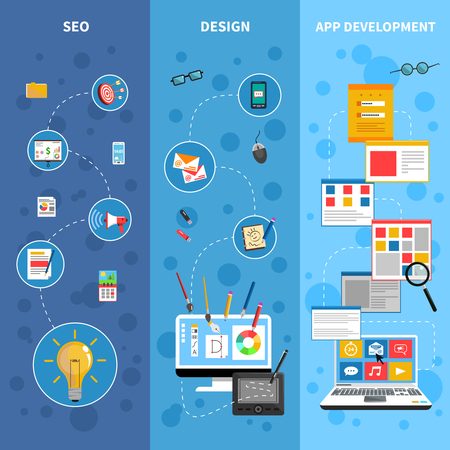Introduction to User Experience in Ecommerce
User experience (UX) has become a critical component of ecommerce success, especially within the competitive landscape of the U.S. digital marketplace. At its core, UX refers to how users interact with and perceive a website or digital product, encompassing aspects like ease of navigation, site speed, clarity of information, and overall satisfaction. In the realm of ecommerce, these principles are no longer optional—they are essential for driving conversions and fostering brand loyalty. As American consumers grow increasingly accustomed to seamless online interactions, their expectations for intuitive design and frictionless shopping experiences have never been higher. This shift highlights why optimizing user experience on product pages is now a top priority for retailers aiming to stand out in the crowded online space. By understanding and applying foundational UX principles—such as usability, accessibility, and responsiveness—ecommerce businesses can create product pages that not only attract visitors but also guide them smoothly through the buying journey, ultimately boosting both customer satisfaction and revenue.
2. Key Elements of a High-Converting Product Page
When it comes to optimizing ecommerce product pages for the American market, user experience (UX) is a key driver of conversions. Understanding what elements make a product page effective can mean the difference between a sale and an abandoned cart. Below, we discuss the core UX features that directly impact buying decisions.
Clear and Concise Product Information
American shoppers expect transparent and detailed product information. Essential details—such as sizing, material, compatibility, price, and shipping options—should be front and center. Overcomplicated or vague descriptions can undermine trust and stall purchases. Successful ecommerce brands use bullet points, easy-to-read fonts, and logical categorization to communicate value quickly.
High-Quality Images and Visuals
Visual appeal plays a critical role in online shopping experiences. High-resolution images that showcase products from multiple angles help customers visualize their purchase. Zoom features, lifestyle photos, and even 360-degree views are increasingly expected by U.S. consumers. The table below highlights essential image-related features for high-converting pages:
| Feature | Description | Impact on Conversion |
|---|---|---|
| Multiple Angles | Showcases different views of the product | Reduces uncertainty, builds confidence |
| Zoom Capability | Allows close inspection of details | Increases perceived quality and trust |
| Lifestyle Images | Presents product in real-life scenarios | Makes product relatable and desirable |
| Video Demonstrations | Shows product in action or how-to use it | Clarifies functionality, boosts engagement |
Intuitive Navigation and Layout
A seamless navigation structure enables shoppers to find products quickly without frustration. Americans value efficiency; if they can’t find what they need within seconds, they’ll likely leave for a competitor’s site. Key UX strategies include sticky add-to-cart buttons, breadcrumb trails, clear CTAs (calls to action), and organized tabs for additional information such as reviews or FAQs.
Navigation Checklist for U.S. Ecommerce Sites:
- Simplified Menus: No clutter—just straightforward categories.
- Consistent Layout: Familiar structures build trust with users.
- Mobile Responsiveness: Pages must function perfectly on smartphones and tablets.
- Quick Access to Cart & Checkout: Prominent placement reduces friction.
User Experience Drives Sales Performance
In summary, product pages designed with these key UX elements not only improve customer satisfaction but also drive higher conversion rates. By investing in clear information, top-tier visuals, and frictionless navigation tailored for American shoppers, ecommerce businesses set the stage for ongoing success.

3. Mobile Optimization: Meeting Modern Consumer Expectations
Mobile optimization has become a non-negotiable aspect of ecommerce product page strategy in the United States. With American consumers increasingly relying on smartphones and tablets for online shopping, delivering seamless mobile experiences is key to driving conversions and loyalty. An effective mobile-optimized product page starts with responsive design, ensuring that all elements automatically adjust to fit various screen sizes without compromising readability or usability. Equally important is the adoption of touch-friendly interfaces—large buttons, intuitive swipe gestures, and easy-to-navigate menus help eliminate friction for shoppers accustomed to interacting with their devices on the go.
Fast load times are another critical factor for engaging American shoppers, who expect instant access to information and are quick to abandon slow-loading pages. Tools like Google PageSpeed Insights or GTmetrix can be used to test and optimize load times, compress images, and minimize unnecessary scripts. Moreover, clear product images that remain sharp on high-resolution displays and streamlined checkout processes tailored for mobile further enhance user satisfaction. By prioritizing these mobile-centric features, ecommerce brands align with modern consumer expectations and position themselves competitively in an increasingly mobile-first market.
4. Personalization and Social Proof in the U.S. Market
When optimizing ecommerce product pages for American consumers, personalization and social proof play a pivotal role in enhancing user experience and driving conversions. U.S. shoppers expect brands to understand their preferences, showcase relevant products, and foster a sense of community through authentic feedback. Below, we break down how tailored recommendations, genuine user reviews, and localized content can build trust and boost sales.
The Impact of Personalized Recommendations
Personalized recommendations use browsing history, purchase behavior, and demographic data to suggest products that are most relevant to individual users. In the U.S. market, this approach caters to the consumer’s desire for convenience and tailored experiences. According to industry studies, ecommerce platforms that implement effective recommendation engines see a significant increase in average order value (AOV) and conversion rates.
| Personalization Feature | User Experience Benefit | Conversion Impact |
|---|---|---|
| “Recommended for You” widgets | Saves time by surfacing relevant items | +20% AOV |
| Dynamic bundles or combos | Makes cross-selling seamless | +15% basket size |
| Geo-targeted promotions | Increases relevance with local offers | +18% conversion rate |
The Power of User Reviews and Social Proof
User-generated reviews are especially influential among American shoppers, who rely on peer opinions to validate purchase decisions. Displaying star ratings, detailed feedback, photos from real buyers, and verified purchase badges increases credibility. Moreover, highlighting trending products or “most popular” badges leverages herd mentality—a proven driver of higher engagement.
| Social Proof Element | User Trust Level (1-5) | Effect on Conversion Rate (%) |
|---|---|---|
| User star ratings (4+ stars) | 5 | +32% |
| Photo/video reviews from customers | 4.5 | +25% |
| Verified purchase tags | 5 | +19% |
| “X people bought this today” | 4 | +12% |
The Value of Localized Content in the U.S.
Ecommerce brands that localize product descriptions, pricing, shipping options, and customer support demonstrate an understanding of American culture and consumer expectations. Using familiar language—such as referencing “free shipping over $35” or “30-day hassle-free returns”—resonates with U.S. shoppers more than generic messaging. Additionally, incorporating region-specific payment methods and honoring major U.S. holidays with themed promotions creates a more relevant shopping experience.
In summary, integrating smart recommendations, authentic reviews, and culturally relevant content on your product pages is essential for building trust and increasing conversions in the competitive U.S. ecommerce market.
5. A/B Testing and Data-Driven Optimization Strategies
For American ecommerce businesses, a successful product page is never “set and forget.” Instead, optimization is an ongoing process rooted in data-driven decision-making. Central to this approach are A/B testing, analytics, and heatmap tools—each playing a critical role in refining user experience (UX) and boosting conversions.
The Power of A/B Testing
A/B testing allows ecommerce brands to compare two or more variations of a product page element—such as CTA buttons, product images, or descriptions—to determine which version performs best with real shoppers. By running these controlled experiments, businesses remove guesswork from the equation and make UX improvements based on actual customer behavior rather than assumptions. For example, an online apparel retailer might test different wording for their “Add to Cart” button, while a tech store could experiment with image galleries versus product videos.
Leveraging Analytics Platforms
Analytics platforms like Google Analytics or Adobe Analytics provide deep insights into how users interact with product pages. American ecommerce teams track metrics such as bounce rate, average session duration, click-through rates, and conversion funnels. These data points help identify friction points—like where users abandon the page—and highlight opportunities for UX enhancements. With custom dashboards and event tracking, teams can zero in on specific elements impacting performance.
Heatmaps: Visualizing User Behavior
Heatmaps are another invaluable tool for US-based ecommerce businesses aiming to optimize product page UX. Tools like Hotjar or Crazy Egg visualize where shoppers click, scroll, or hover most frequently. This granular view helps pinpoint which parts of the page draw attention and which are ignored. For instance, if users consistently overlook trust badges or shipping information, it signals a need to reposition or redesign those elements for greater visibility.
Iterative Refinement as a Competitive Advantage
The true advantage comes from combining these strategies in an iterative cycle: gather data with analytics and heatmaps, develop hypotheses, run A/B tests, then implement winning changes. This continuous loop ensures that the product page evolves alongside changing customer preferences and market trends—a must in the highly competitive American ecommerce landscape.
Ultimately, embracing data-driven optimization not only enhances the user experience but also drives measurable business results—from increased add-to-cart rates to higher order values—making it an essential practice for any US ecommerce operation serious about growth.
6. Balancing UX Enhancements with Brand Identity
One of the most significant challenges in ecommerce product page optimization is ensuring that user experience (UX) improvements do not dilute or conflict with your brand identity. For U.S. audiences, where consumers expect both intuitive online shopping and a distinct brand personality, finding the right balance is critical.
Challenges of Aligning UX and Brand Messaging
Enhancing usability often means simplifying design elements, streamlining navigation, or adopting widely accepted patterns—steps that can risk making your site feel generic. At the same time, strong brands leverage unique visuals, tone of voice, and storytelling to stand out. The challenge lies in integrating best-in-class UX features while maintaining recognizable colors, typography, logos, and messaging that reinforce trust and brand loyalty among American shoppers.
Best Practices for U.S. Ecommerce Sites
1. Prioritize Brand-Consistent Visual Hierarchy
Establish a visual hierarchy using your brand’s color palette and fonts so key information pops without overwhelming users. For example, highlight calls-to-action in signature brand colors to make them both prominent and on-brand.
2. Maintain Voice Across Touchpoints
Your microcopy—button text, error messages, product descriptions—should reflect the same friendly, professional, or playful tone found in your advertising and social media. This consistency reassures U.S. shoppers they’re interacting with the authentic brand at every step.
3. Test With Real Users
Conduct A/B testing and gather feedback from target U.S.-based customers to ensure new UX elements support both ease-of-use and brand recognition. Tools like UserTesting.com or Hotjar allow you to observe if changes resonate with American audiences without causing confusion.
4. Leverage Storytelling in the Experience
Integrate lifestyle images, customer reviews from local buyers, and interactive content that aligns with your brand’s story. These elements foster emotional connections without sacrificing usability.
Key Takeaway
The most successful U.S. ecommerce brands are those that create seamless shopping experiences while reinforcing what makes them unique. By intentionally combining intuitive design with consistent branding cues, you can deliver optimized product pages that drive conversions and build long-term customer relationships.
7. Conclusion: The Competitive Advantage of Exceptional User Experience
In today’s highly competitive U.S. ecommerce landscape, investing in user experience (UX) is no longer a luxury—it’s a strategic necessity. With consumers faced with an overwhelming array of choices, the ease, efficiency, and enjoyment they experience while interacting with your product pages can make or break their purchasing decision. Optimizing UX on ecommerce product pages not only streamlines navigation and reduces friction, but also builds trust, strengthens brand loyalty, and directly impacts conversion rates. American shoppers expect fast load times, intuitive layouts, mobile responsiveness, and clear calls-to-action; meeting these expectations is key to staying relevant.
Moreover, as ecommerce platforms increasingly leverage data-driven personalization and advanced design tools, those who continue to innovate in UX will consistently outperform competitors relying on outdated or generic templates. A superior user experience encourages repeat visits, positive reviews, and word-of-mouth referrals—critical factors for growth in a saturated market. Ultimately, prioritizing exceptional UX gives businesses the edge needed to stand out from the crowd, convert browsers into loyal customers, and secure long-term success in the U.S. ecommerce sector.

